I'm A 37-Year-Old Breast Cancer Survivor, And My Red Flag Symptom Wasn't A Lump
Hello, world, I'm Megan. I'm 37 years old, and a few weeks ago, I got to ring a gong to celebrate finishing up active treatment for stage two breast cancer.

I got my diagnosis just a few months earlier, in February 2023. Soon after, I scrolled past headlines announcing that cancer screening guidelines had just been updated to recommend breast cancer screenings starting at age 40 instead of 50. But for AYA (adolescent and young adult) cancer patients like me, those screenings could still come too late — which is why it's so vitally important for people under 40 to know the signs to look out for.
We all know that a lump in the breast is the classic breast cancer red flag, but that's not how my story begins. Instead, I noticed visual changes in my breasts that I initially chalked up to aging. First, my right breast had started to sag while old lefty still sat up high where it always did. I didn't really associate visual changes like this with cancer, so my thought was, "Huh, I guess this is life in my 30s." I figured one side would just hang lower for a while and the other would eventually drop to meet it.

I got worried about it one day when I went to take off my bra and noticed that my left breast was sort of folded in half inside the cup, with the nipple sunken in the middle. This seemed distinctly not good, so I nervously did a self-exam and visual inspection. This time, I noticed that the contour of my left breast had changed. Instead of one round curve, it had a bulge on the outer edge like a cartoon cloud. And, when I raised my arms, I could see dents in my breast that I was sure weren't there before.
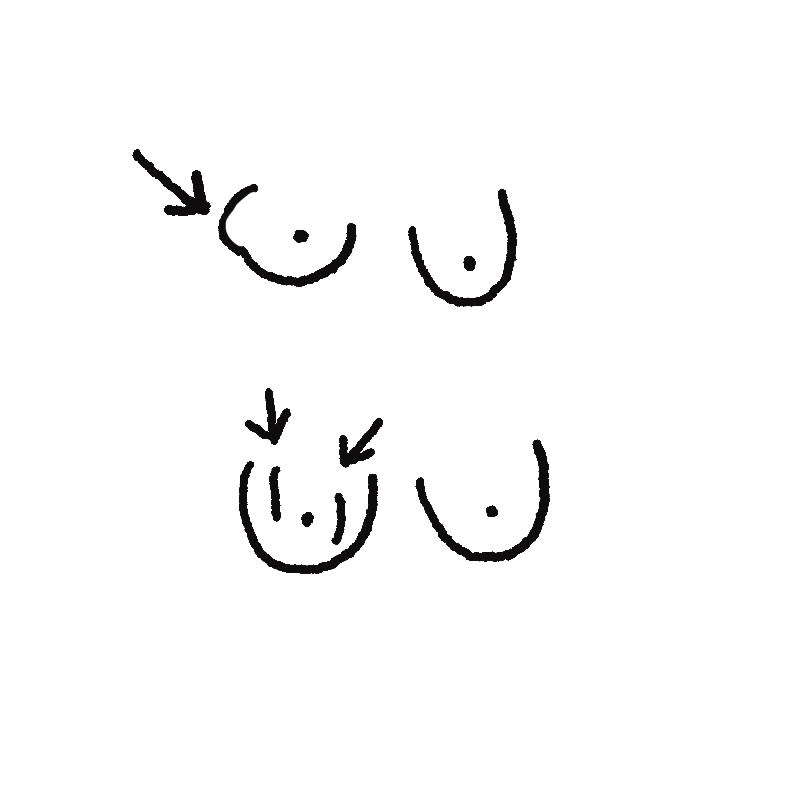
The first doctor I saw felt my breast for a minute and told me it was normal (YIKES). And for a little while, I believed him. He was very reassuring but also kinda patronizing, and I left the appointment feeling embarrassed for getting worked up over "nothing." I tried to accept the change in my breast and get used to my weird boob. But I couldn't stop noticing the difference in my body and wondering, what if he was wrong? So I saw a second doctor a few months later who immediately ordered an ultrasound and mammogram. The ultrasound tech looked at me like I was a ghost and offered me a same-day biopsy, and I knew in that moment that things were serious.
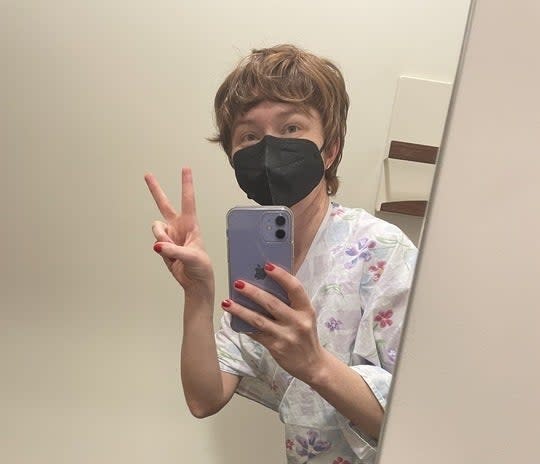
Getting ready for my biopsy like, "Hehe, I'm in danger."
About a week later, I got the call. It turned out to be stage two invasive lobular carcinoma — the second-most-common form of breast cancer which accounts for only about 10% of cases. While I could feel a difference in my breast tissue (which the medical literature ickily calls "a thickening"), this form of cancer sometimes can't be felt at all. It can also tend to be harder to see on imaging like a mammogram or ultrasound. My cancer was hormone positive, which means that the hormones estrogen and progesterone both helped fuel its growth. Luckily, early-stage cancers like mine are considered curable, and as of right now, I'm cancer-free.
I have no family history of breast cancer, and genetic tests found that I don't carry any known genes associated with cancer like BRCA. I also didn't notice any other symptoms besides the visual changes to my left breast. However, I did have melanoma in my early 20s and I periodically have to get new precancerous moles shaved off, so unfortunately this wasn't my first cancer rodeo. But it still caught me off guard — I'm used to being super vigilant about skin changes, but before this, I didn't actually know all the warning signs of breast cancer to look out for.
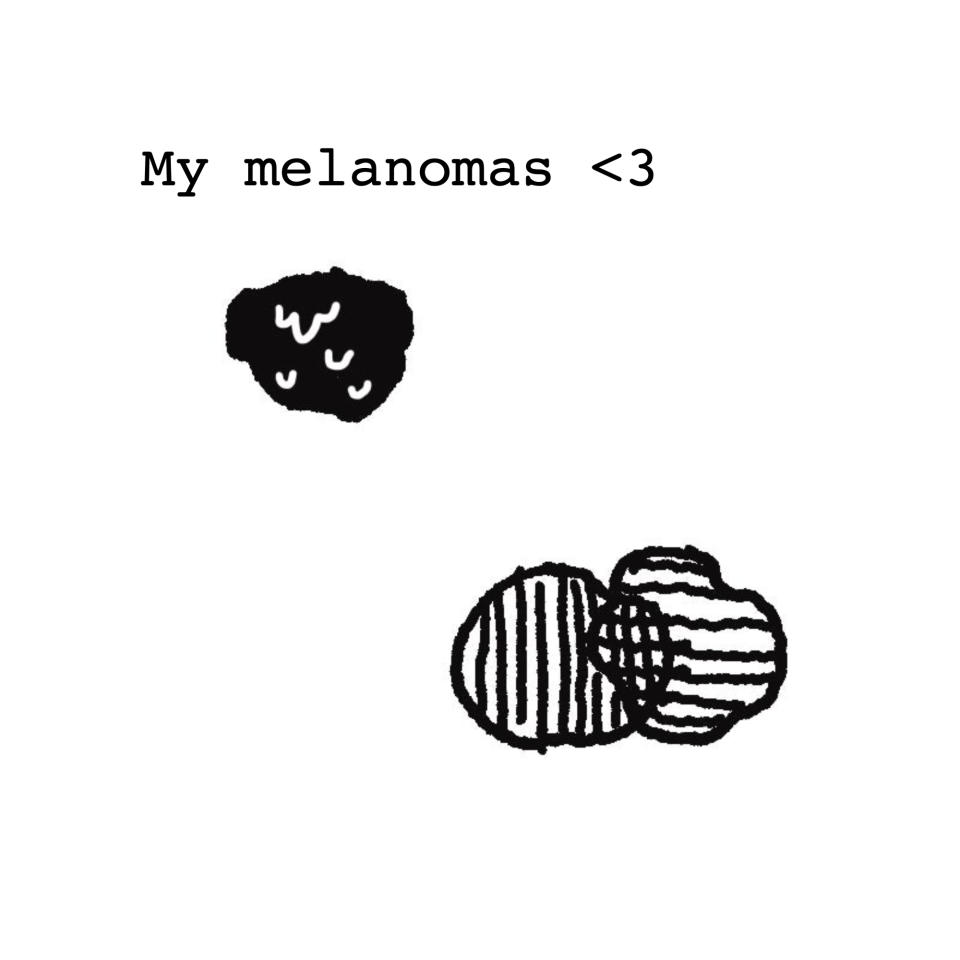
If you're curious, in my case, melanoma presented as a mole that turned black and peeled constantly and a pair of moles that grew together like a cute little venn diagram that wanted to kill me. You can find more skin cancer warning signs here.
I knew that it's important to do a monthly self-exam (probably from an article I read in Cosmo in when I was in high school) but I thought you were just supposed to feel your breasts once a month in the shower. Spoiler alert: you should look at them, too! According to the medical pros at breastcancer.org, it's actually a 5-step process. I also love this guide to doing a self-exam from The Breasties, an organization that connects young survivors, previvors, and thrivers to make having stupid cancer much less lonely.
Step one: put your hands on your hips and look at your breasts in the mirror. Look out for changes in your skin like dimpling, puckering, or rashes, changes in your nipples, like the direction they're pointing, or if they're becoming inverted. Any of these changes should get evaluated by a doctor.
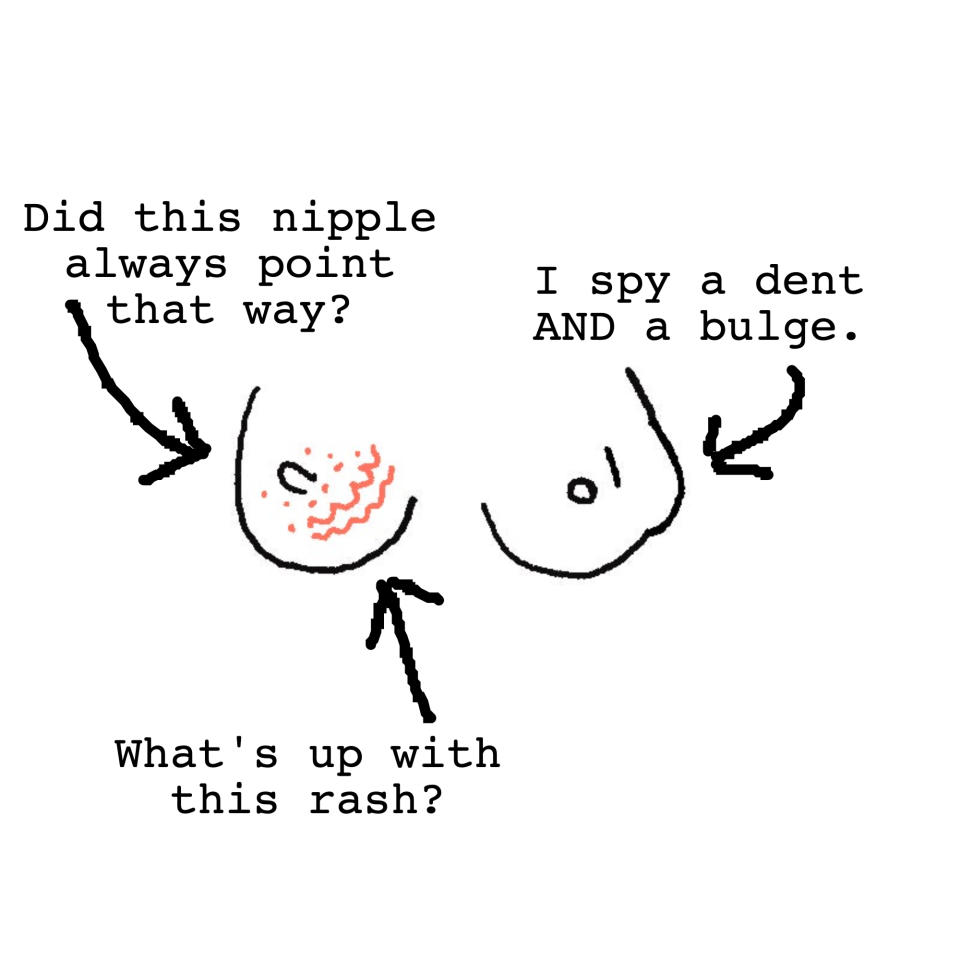
Step two: raise your arms and look for the same types of changes mentioned above. When I had my tumor, if I raised my arms, two vertical dents appeared in my breasts because the healthy tissue moved with my arms while the "thickened" area stayed in place.
Step three: nipple check. Look for any signs of discharge or bleeding coming from your nipples. Bloody discharge is not normal and should get checked out, but some types of nipple discharge can be totally benign.
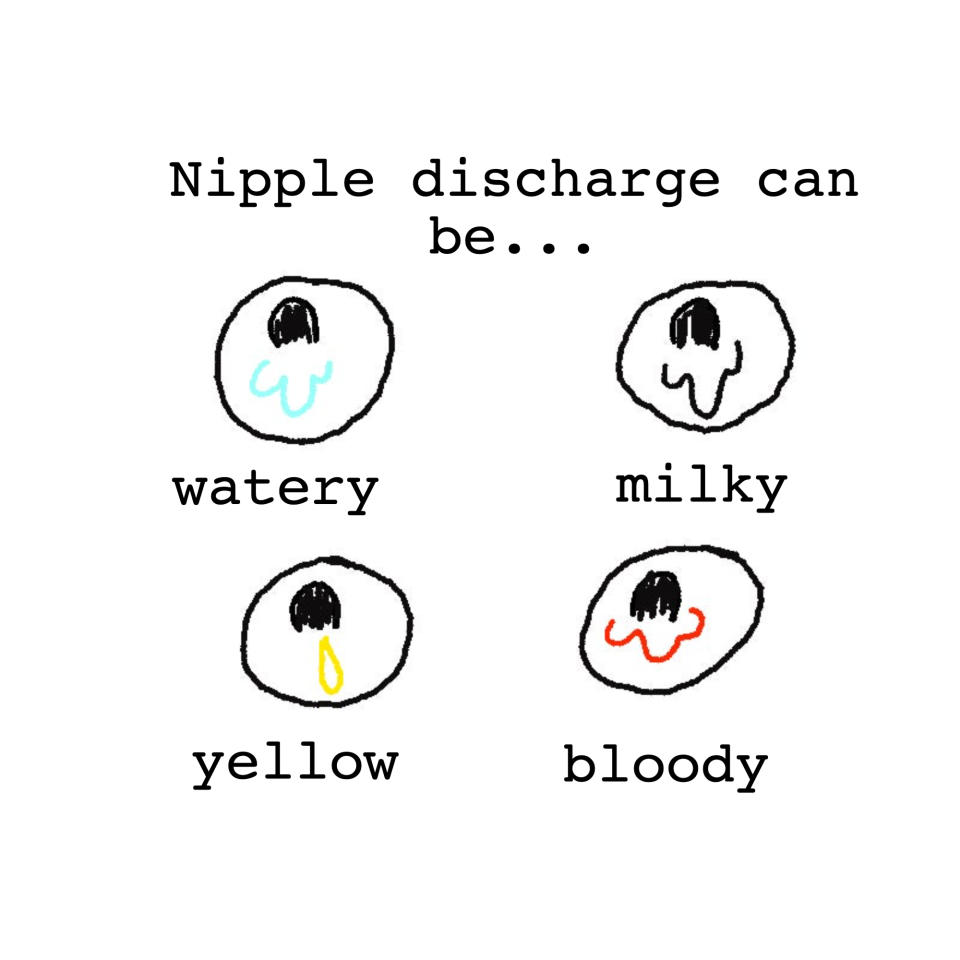
Step four: feel your breasts for lumps while laying down with your arm above your head. Using the pads of your fingertips, feel from your collarbone to your abdomen and from your armpit to your sternum.
Step five: feel your breasts again, but this time while sitting or standing up. Don't immediately freak out if you feel a lump — they can be totally benign. But seeing a doctor and getting imaging and/or a biopsy is the best way to know for sure.
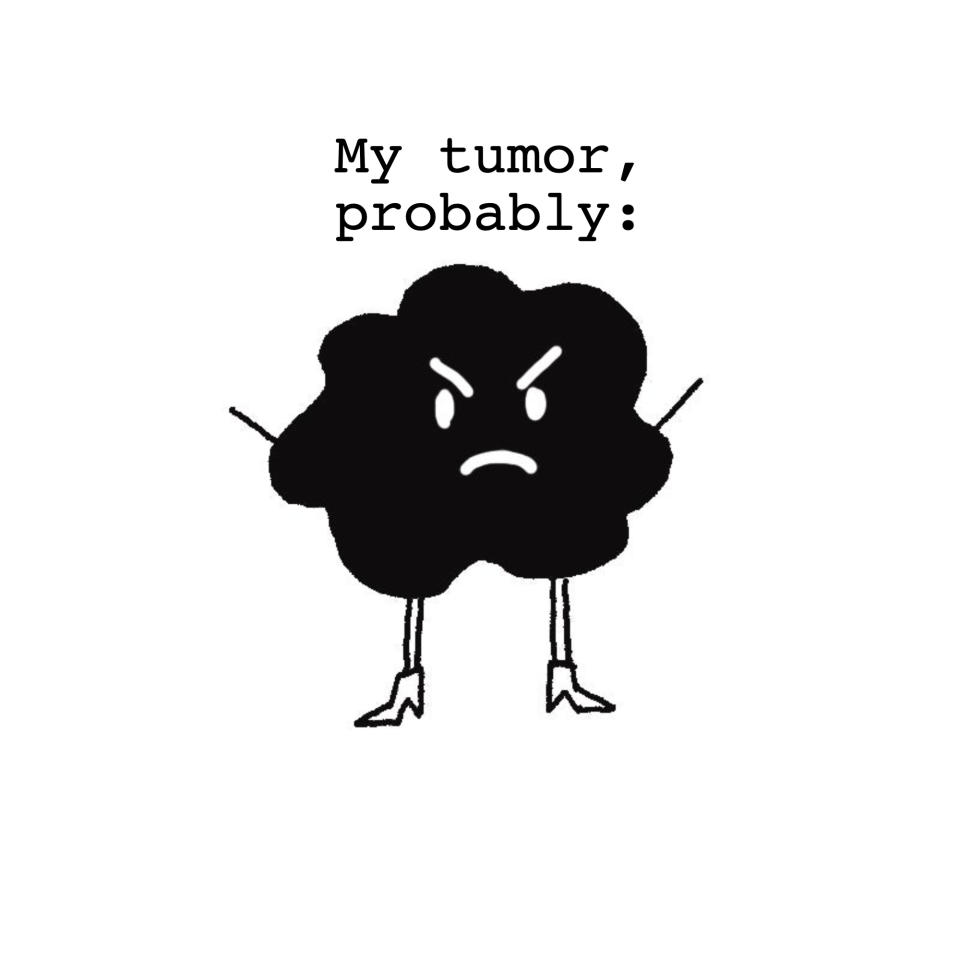
Drawing mean pictures of one's tumor can be surprisingly therapeutic.
After my diagnosis, time simultaneously sped up and slowed down. I had lots of appointments and follow-up tests to determine what stage I was at and what treatment plan would be best. I met with a breast surgeon, a plastic surgeon, a genetic counselor, a radiation oncologist, and a medical oncologist, and I had an MRI and a PET scan, all in a matter of weeks. It felt like things were happening too fast, but at the same time, knowing that I had cancer living inside of me, it felt like everything was taking too long. It was like a dream where you try to run but your feet are frozen to the ground.
I learned that no part of my left breast could be saved, and when precancerous lesions were found in the right as well, I made the difficult decision to get a bilateral mastectomy for symmetry and safety. While meeting with a plastic surgeon, I learned that breast reconstruction cannot be further from the "free boob job" that people seem to think it is. In my case, it would have taken several surgeries, and in the end, I would still likely have no sensation in the new breasts because of nerve damage from the mastectomy. For me, it just didn't make sense to put my body through so much for boobs that I wouldn't even be able to feel, so I opted to go flat and I haven't regretted it yet.
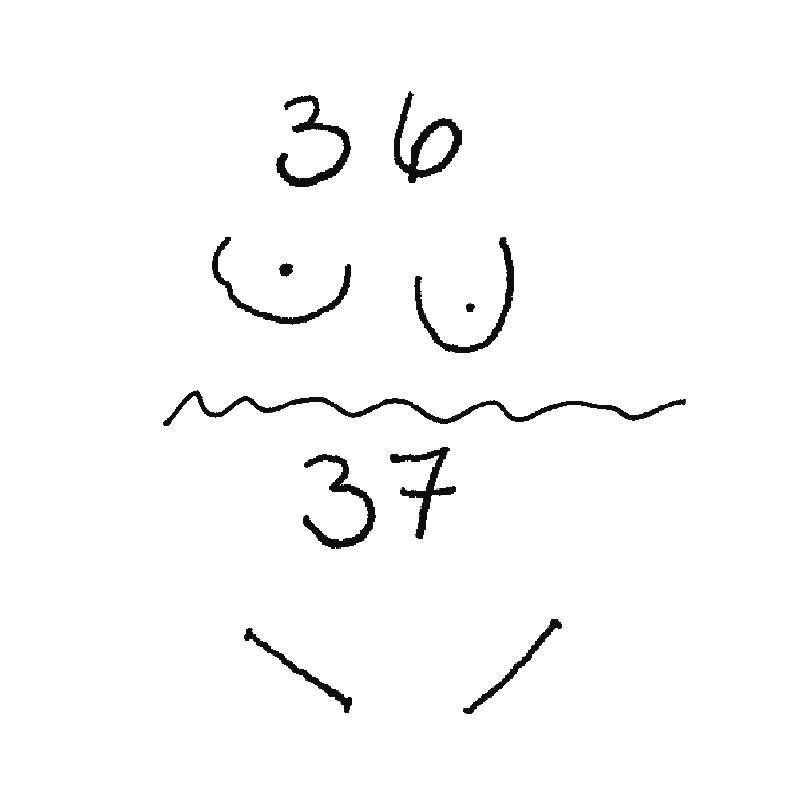
I also learned that the rest of my treatment plan depended heavily on the findings of my surgery. Since lobular cancer can hide in imaging, it's hard to know what you're really dealing with until you get into the tissue itself. I went into surgery not knowing if I would need chemo and/or radiation next, or if I could skip ahead to taking hormone therapy drugs to prevent a recurrence.
On April 3, I went in for surgery and woke up with no boobs, asking my wonderful angel-lady surgeon (shout out to Dr. Barry!) where my cats were and if we could watch Bob's Burger's now. Recovering from surgery took a month, and I had plenty of time to hang out with the Belchers and cuddle my cats while I waited for the surgical findings to come back. There was good news and bad news. The good news: I was basically cancer-free and wouldn't need to get chemo. The bad news: I still had to undergo 25 rounds of radiation and take ovarian suppression drugs for five years which will put me into medical menopause (hot flashes included).
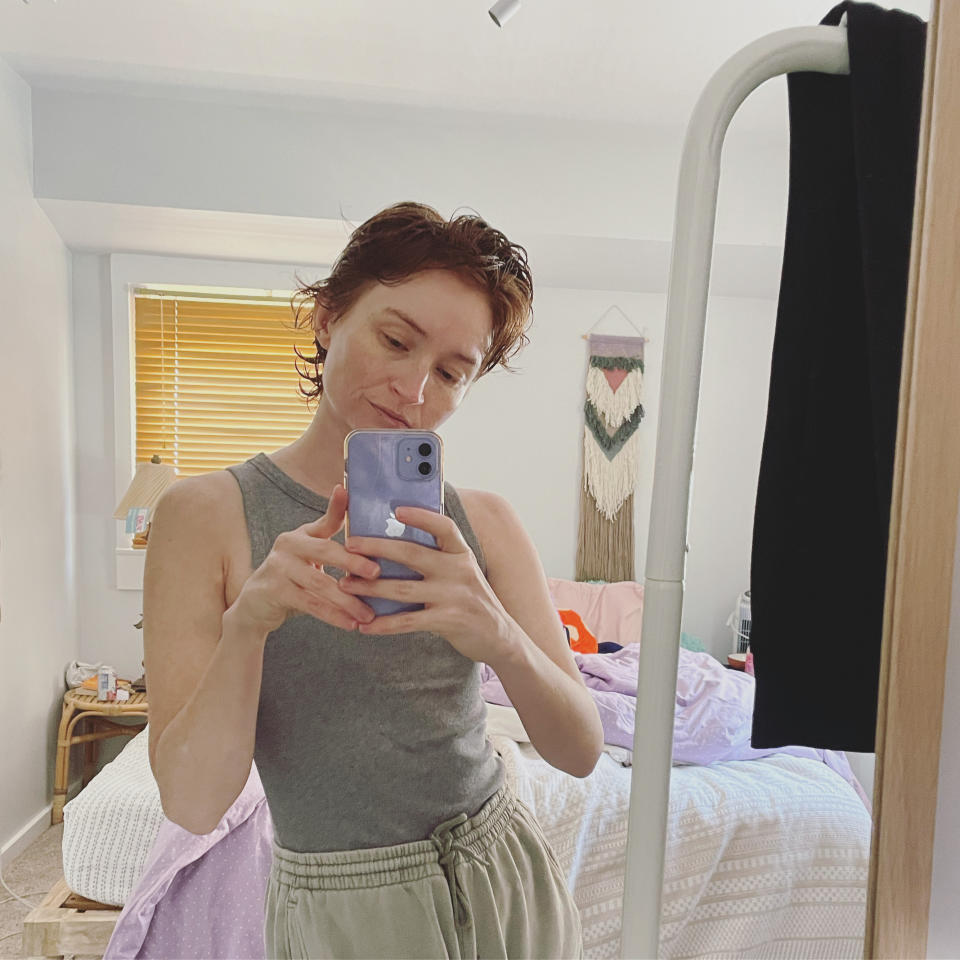
Two weeks after surgery feeling extremely proud of myself because I could finally raise my arms enough to pull a shirt on over my head. You gotta celebrate all the wins!
I finished radiation on June 20, and as I write this, my skin is still red and pink and peeling off in the treatment area. I still get tired much faster than I used to, and even though, intellectually, I know it's over, it doesn't quite feel like it yet. I wish I could say I'm "back to normal", but that will never be truth. My task now is finding a new normal as I adjust to my new body and hormonal changes and grapple with all the questions and emotions and fears that a cancer diagnosis brings. I'm okay, but I'm not the same.
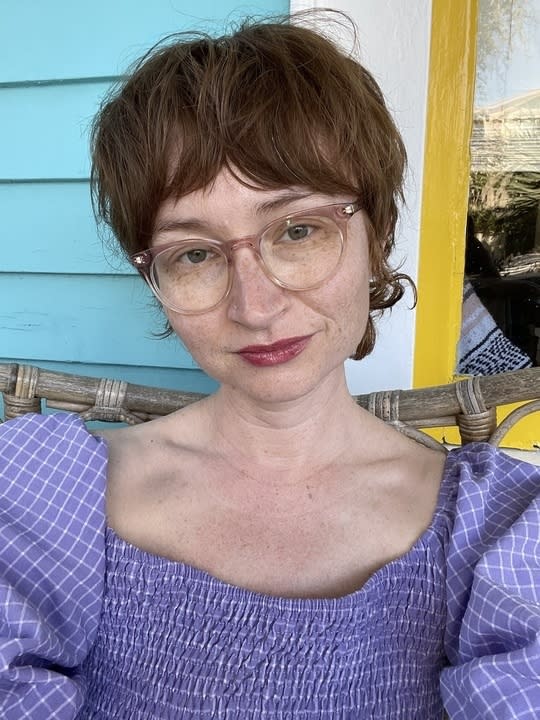
Three weeks after surgery in my favorite dress, feeling cute and proud of my body for all that she endured.
I share my story in the hopes that it reaches someone who needs to hear it. Whether your boob has been looking weird or there's a lump you're not sure about or there's something else entirely going on in your body, you owe it to yourself to check it out. You're not being "too much" if you ask for a second opinion — I wish I'd gotten one sooner. And if you're worried about the costs of cancer screenings, groups like Planned Parenthood and the CDC’s National Breast and Cervical Cancer Early Detection Program can help you access the services you need. Take care of yourself and know your body — you could save your own life.


